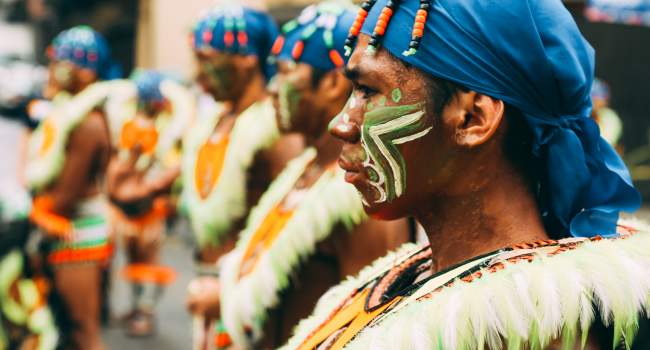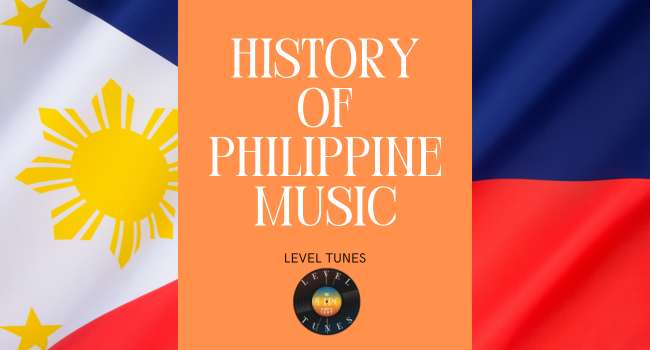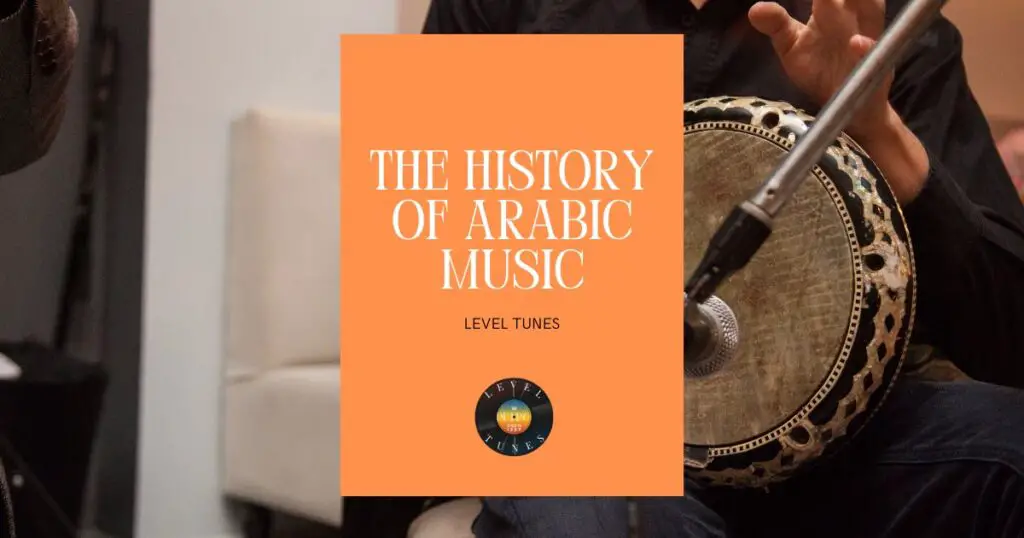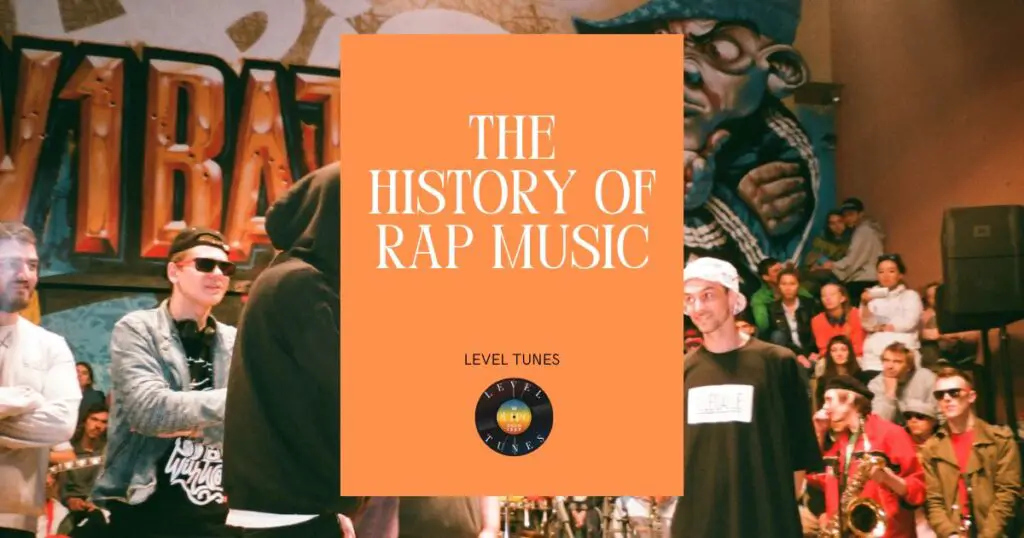Exploring the rich tapestry of Philippine music can often feel like a challenging feat. Even I was taken aback by the extensive blend of indigenous, Spanish colonial and American influences that permeate our traditional songs to contemporary hits.
This article offers an in-depth journey through time, painting a picture of how Filipino music has evolved from its humble beginnings, shaped by various cultural exchanges. Ready for a musical adventure?.
Quick Facts
- The history of Philippine music is a blend of indigenous, Spanish colonial, and American influences.
- Indigenous music includes gong music, Hispanic – influenced music, rondalla, harana, and kundiman.
- Popular music in the Philippines encompasses genres like Manila sound, Original Pilipino Music (OPM), Pinoy pop (P-pop), choir music, rock music, and hip hop.
- Filipino artists have made significant contributions to the global music industry while preserving their cultural heritage.

Indigenous Music of the Philippines
Indigenous music of the Philippines includes gong music, Hispanic-influenced music, rondalla, and harana and kundiman.
Gong music
Delve into the rich tapestry of Filipino musical heritage, and you’ll find yourself immersed in the rhythmic world of gong music. Predominantly from Mindanao and Sulu in Southern Philippines, this melodious art form, particularly the kulintang ensemble, holds a significant place within our history.
Imagine an array of bossed gongs – each with its unique tone – creating harmonious melodies amplified by pulsating rhythmic patterns. This hypnotic blend, both composed and improvised, forms our beloved kulintang music; it’s not just sound to our ears but an echo embodying traditional Filipino culture.
From ancient Muslim folk songs to enthralling dances that set your heart racing – each note played on these percussive instruments narrates centuries-old intricacies of life across varied Filipino ethnic groups.
Celebrated as more than just a traditional instrument, these sets of gongs and drums radiate strong communal connections among Filipinos – making it an extraordinary symbol linked deeply to our love for music.
Hispanic-influenced music
In the realm of Philippine music, Hispanic-influenced melodies certainly hold a special place. This genre brings together tribal and traditional Spanish tunes in a beautiful symphony that’s uniquely Filipino.
Its birth arose during the Spanish colonization period when our country was exposed to their vibrant musical traditions for over 400 years!
The impact has been far-reaching, adding depth and dimension to our indigenous music scene. You can hear it distinctly in rondalla and harana songs —their stylistic elements steeped heavily in Spanish influence.
The fusion of these distinct cultures has created an auditory tapestry that is as diverse as the Filipino people themselves.
Hispanic music isn’t just about rhythm and melody; it also tells tales of our shared history with Spain. It encapsulates every strum of the guitar, every pluck of the banduria strings – painting vivid images from eras past through its stirring narratives.
In many ways, this blend of indigenous and Hispanic influences mirrors our evolution as a society: adapting foreign influences while preserving what makes us truly Filipino at heart! So next time you listen to a kundiman or fall under the spell of opm (original pilipino music), remember—you’re not just hearing notes but fragments of our rich cultural heritage intertwined with sounds from across seas!
Rondalla
The Rondalla holds a significant place in the vibrant tapestry of Philippine music. A gift of musical heritage from Spanish traditions, it has evolved uniquely over the years to suit Filipino tastes and sensibilities.
Its heart lies in an ensemble of plucked string instruments, such as the bandurria and laud – both essential to the distinctive sound of rondalla. These groups have been instrumental not just in preserving our traditional sounds but also providing accessible and affordable music education across schools in our country.
The deep-rooted indigenous influences evident in its rhythms make Rondalla an audible symbol of patriotism while encapsulating centuries’ worth of cultural heritage within each note played or sung.
Furthermore, Tagumpay Mendoza de Leon’s masterful teachings and performances amplify its significance manifold among Filipinos, earning this genre recognition as the “people’s musician”.
Through every strum on strings spanning generations, one can hear echoes that shape much like a maestro chiselling history into every beat – making Rondalla more than just tunes for ears; it is indeed melodies for souls painted vividly through time.
Harana and Kundiman
As a music lover, I’m sure you’ll appreciate the beauty and rich history of Harana and Kundiman in Philippine music. Harana is a traditional serenade tradition that originated during the Spanish colonial period, influenced by folk music from Spain and the captivating sounds of mariachi bands.
On the other hand, Kundiman is considered the art song of the Philippines, often used to express unsuccessful courtship. These lyrical songs have stood the test of time and continue to hold significant cultural value in Filipino music.
The harana reflects Mexican-Spanish traditions while Kundiman exudes passion as a form of Tagalog romantic song. Both genres beautifully capture themes of courtship and longing that have been integral to Philippine musical expressions for centuries.

Popular Music in the Philippines
Popular music in the Philippines encompasses a wide range of genres, from Manila sound to OPM and P-pop. It reflects the vibrant musical culture of the country and continues to evolve with modern influences.
Explore the fascinating history and diverse sounds of Filipino music in our blog.
Manila sound
When it comes to the history of Philippine music, one genre that cannot be forgotten is Manila sound. Originating in Metro Manila during the mid-1970s, this musical movement swept the nation with its catchy pop tunes and Pinoy flair.
With influences from disco, funk, and rock, Manila sound became a defining moment in Philippine music history.
During its peak in popularity in the late 1970s, Filipino artists and groups gained widespread recognition both at home and abroad. One notable band that played a pivotal role in revolutionizing Filipino music was Hotdog.
Their hit song “Bongga Ka ‘Day” captured the essence of Manila sound and went on to become an anthem for many Filipinos.
Today, Manila sound holds a special place in our hearts as it reminds us of a vibrant era filled with danceable beats. It paved the way for Original Pilipino Music (OPM), which emerged in the 1980s and continues to shape the local music industry today.
Original Pilipino Music (OPM)
I absolutely love Original Pilipino Music (OPM)! It emerged in the 70s and 80s, paving the way for a new era of Philippine pop music. OPM refers to popular songs composed and performed by Filipino artists, covering various genres like rock, pop, ballads, and folk.
What makes OPM truly special is its heartfelt lyrics that tell emotional stories. From its humble beginnings, OPM has gained international recognition with many artists collaborating with renowned musicians from around the world.
It’s amazing how OPM has shaped Philippine music history while preserving our culture and language through beautiful melodies and soulful performances.
Pinoy pop (P-pop)
Pinoy pop, also known as P-pop, is a vibrant and dynamic genre of music that has taken the Philippines by storm. It emerged in the 1970s and gained massive popularity in the 1990s and 2000s.
As a music lover, you’ll find yourself captivated by its catchy melodies, upbeat rhythms, and relatable lyrics that reflect the diverse experiences and emotions of the Filipino people.
P-pop artists have created an incredible movement within OPM (Original Pinoy Music), showcasing their immense talent and creativity to both local and international audiences.
P-pop draws influence from various musical genres like pop, R&B, hip-hop, and electronic music. This fusion results in a unique sound that appeals to a wide range of listeners. In fact, many P-pop groups have achieved great success globally while contributing to the globalization of Filipino music as a whole.
Over the past decade especially, P-pop has experienced a resurgence in popularity. With dedicated fan bases supporting them every step of the way, these talented artists have truly made their mark on Philippine pop music history.
Not only have they contributed memorable hits to our musical landscape but they’ve also sparked comparisons with other Asian pop movements such as K-pop (Korean pop), demonstrating just how influential Pinoy pop has become.
Choir music
Choir music holds a special place in the heart of Philippine music lovers. It has been an important part of our culture for centuries, even before the Spanish colonization. From the choirs that sing during mass at churches to secular performances and competitions, choral singing is deeply embedded in our musical heritage.
One renowned example is the Philippine Madrigal Singers, formed in 1963 by National Artist Professor Andrea O. Veneracion. They have garnered numerous international awards and acclaim, showcasing the world-class talent and artistry of Filipino singers.
Choral music in the Philippines spans various genres and styles, from ancient to contemporary, sacred to romantic. The lush sound created by a mass of voices captures the essence of our choral tradition and reflects the vibrant diversity of our music scene here in the Philippines.
Rock music
Rock music has had a significant impact on the Philippine music scene, captivating audiences with its energetic beats and rebellious spirit. Filipino rock artists have embraced various subgenres, from classic rock to alternative and punk rock.
What makes Pinoy rock unique is its fusion of different musical influences, including pop, folk, and even reggae elements. This blending of genres gives Filipino rock its distinct sound and showcases the rich cultural heritage of the Philippines.
Throughout history, Filipino rock bands have emerged as powerful voices in expressing social issues and political struggles in their music. In fact, some well-known Pinoy rock bands from the 70s like Juan de la Cruz Band and Sampaguita drew inspiration from the psychedelic sounds popular in Britain during that time.
Hip hop
Hip hop music has become a vibrant part of the Philippine music scene, bringing with it its own unique blend of beats, rhymes, and storytelling. Influenced by rap music from the United States, Filipino hip hop artists have embraced this genre as a way to express their identities and connect with their diaspora community.
From mobile DJs spinning records to turntablism competitions and Pilipino Culture Nights (PCNs), hip hop has firmly established itself as a subculture within the Filipino music landscape.
It’s not just about copying American culture though; Filipino rap has evolved into its own distinct form of artistic expression and collaboration. With its roots in U.S.-Philippine relations during the colonial period, hip hop in the Philippines reflects the complex history between these two nations.
Other genres
Aside from the well-known genres mentioned earlier, there are several other genres that have made their mark on the Philippine music scene. Jazz, for example, has roots in the American colonial period and has since evolved to incorporate Filipino elements.
This fusion of styles creates a unique sound that showcases both local talent and international influences. Reggae and ska music have also gained popularity in the Philippines, drawing inspiration from Jamaican and Caribbean music styles.
These genres bring a laid-back groove to the vibrant Filipino music landscape. Additionally, hip-hop music has made its mark with Filipino artists infusing their own cultural and linguistic elements into the genre.

Influence of Spanish Colonization on Filipino Music
Spanish colonization greatly influenced Filipino music, introducing Spanish musical traditions and instruments to the country. This had a significant impact on traditional Filipino music, resulting in a fusion of indigenous sounds with Hispanic elements.
Introduction of Spanish musical traditions and instruments
When the Spanish colonizers arrived in the Philippines in the 16th century, they brought with them their own musical traditions and instruments. This introduction of Spanish music had a significant impact on Filipino music, shaping its evolution for centuries to come.
The incorporation of Spanish musical elements into Filipino music created a unique fusion that continues to define our musical identity today.
Spanish colonial music, both sacred and secular, enjoyed a long tradition of performance in the Philippines. The Spanish discovered that Filipinos were naturally inclined towards singing, which led to the integration of liturgical music into local practices.
As a result, Philippine musical compositions often reflect a blend of indigenous styles and Spanish/Latin American influences.
Moreover, new instruments were introduced during this period, enriching the existing repertoire of traditional Filipino instruments. These include stringed instruments like guitars and bandurrias, as well as percussion instruments like castanets and maracas.
Impact on traditional Filipino music
The impact of Spanish colonization on traditional Filipino music was significant and far-reaching. The introduction of Spanish musical traditions and instruments forever changed the landscape of Filipino music.
Through a process of cultural exchange, indigenous Filipino music incorporated Spanish elements, resulting in a unique fusion that became the foundation for modern Filipino music. This blending of styles and techniques gave birth to new musical forms, such as the harana and kundiman, which are deeply rooted in both Filipino and Spanish cultures.
The influence of Spanish colonization on traditional Filipino music is an important aspect to understand when exploring the history of Philippine music.
The Evolution of Filipino Music
Filipino music has undergone a remarkable evolution, with influences from American blues, folk, R&B, and rock and roll shaping its modern sound. The Philippines was also home to the first hip-hop scene in Asia, showcasing the country’s ability to fuse different musical styles and create something entirely unique.
Today, Filipino music continues to thrive and adapt to changing times, incorporating a wide range of genres and influences into its vibrant tapestry of sounds.
Influence of American blues, folk, R&B, and rock and roll
As a music lover, I can’t help but be amazed by the influence that American blues, folk, R&B, and rock and roll have had on Filipino music. When the United States occupied the Philippines from 1898 to 1946, they introduced these genres to the country, which quickly gained popularity among Filipinos.
The introduction of American music styles like blues and rock and roll attracted a younger generation of musicians in the 1950s to the 1960s. This led to the establishment of a vibrant popular music industry in the Philippines that blended these new influences with local musical traditions.
Filipino musicians embraced and incorporated American music into their own sound, creating a unique fusion that continues to evolve today. From catchy pop tunes to soulful ballads with Filipino lyrics, our music landscape has been shaped by this cultural exchange between two nations through their love for melody and rhythm.
Development of the first hip-hop music scene in Asia
I am thrilled to share with you the fascinating story of how the Philippines became home to Asia’s first hip-hop music scene. In the early 1980s, Filipino youth in Manila started embracing this vibrant and energetic genre, which had originated in New York City.
Influenced by American hip-hop culture, young Filipinos found their own unique voice within the genre.
What began as a form of cultural borrowing soon turned into an incredible display of artistic expression and collaboration. Filipino rap artists infused their own experiences and struggles into their lyrics, creating a distinctly Filipino sound that resonated deeply with fans across the country.
The emergence of hip-hop in the Philippines not only showcased the talents of local artists but also provided a safe space for communities to come together and celebrate their shared love for music.
Today, Pinoy hip-hop continues to thrive and evolve, with numerous talented artists pushing boundaries and making waves both locally and internationally.
Modern influences and fusion of different musical styles
Modern Filipino music is a beautiful tapestry of diverse influences and musical styles. Over the years, it has evolved through the fusion of indigenous sounds with Asian, Spanish, and American music.
This unique blend has given rise to a wide range of genres that cater to different tastes. From the soulful melodies influenced by American blues and folk, to the infectious rhythm and beats of rock and roll, hip-hop, and pop music – Filipino artists have embraced these modern influences while staying true to their roots.
The result is a vibrant and dynamic music scene that continues to push boundaries and captivate audiences both locally and internationally. Whether you’re a fan of traditional Filipino tunes or enjoy exploring contemporary sounds, there’s something for everyone in this richly diverse musical landscape.
Conclusion
In conclusion, the history of Philippine music is a rich tapestry that reflects the country’s diverse cultural influences. From indigenous music and Spanish colonization to the fusion of different musical styles, Filipino music has evolved and thrived over time.
OPM has become a symbol of national pride, showcasing the unique talent and creativity of Filipino artists. As we continue to celebrate our musical heritage, let us appreciate the melodies and rhythms that have played a significant role in shaping our identity as Filipinos.
FAQs:
What is the history of Philippine music?
The history of Philippine music dates back to ancient times and has been influenced by various indigenous cultures, Spanish colonization, American occupation, and modern globalization. It encompasses a wide range of genres and styles, reflecting the rich cultural heritage of the Philippines.
What are some traditional Filipino musical instruments?
Traditional Filipino musical instruments include the kulintang (gong ensemble), kudyapi (lute), guitar, bamboo flutes like the tongali and kalaleng, drums like the tambol and gangsa, as well as various percussion instruments made from coconut shells or animal bones.
How has Spanish colonization influenced Philippine music?
Spanish colonization greatly influenced Philippine music through the introduction of Western musical elements such as harmony, notation systems like solfège (do-re-mi), choral singing in churches, stringed instruments like the guitar and piano, as well as new dance forms like polka and waltz.
How has modern globalization impacted Philippine music?
Modern globalization has brought diverse influences to Philippine music through exposure to international genres such as pop, rock, hip-hop, R&B, EDM (electronic dance music), and K-pop. This fusion with global trends has resulted in contemporary Filipino artists creating unique sounds that blend both local and international flavors in their compositions.
Thanks for reading.
TBone




